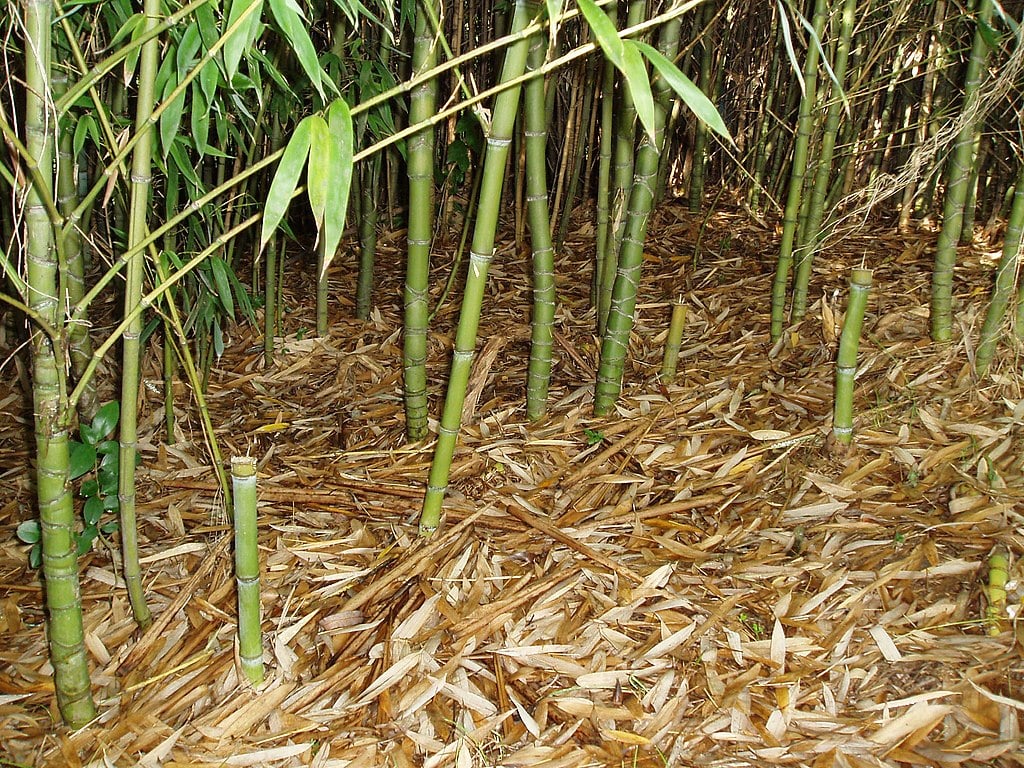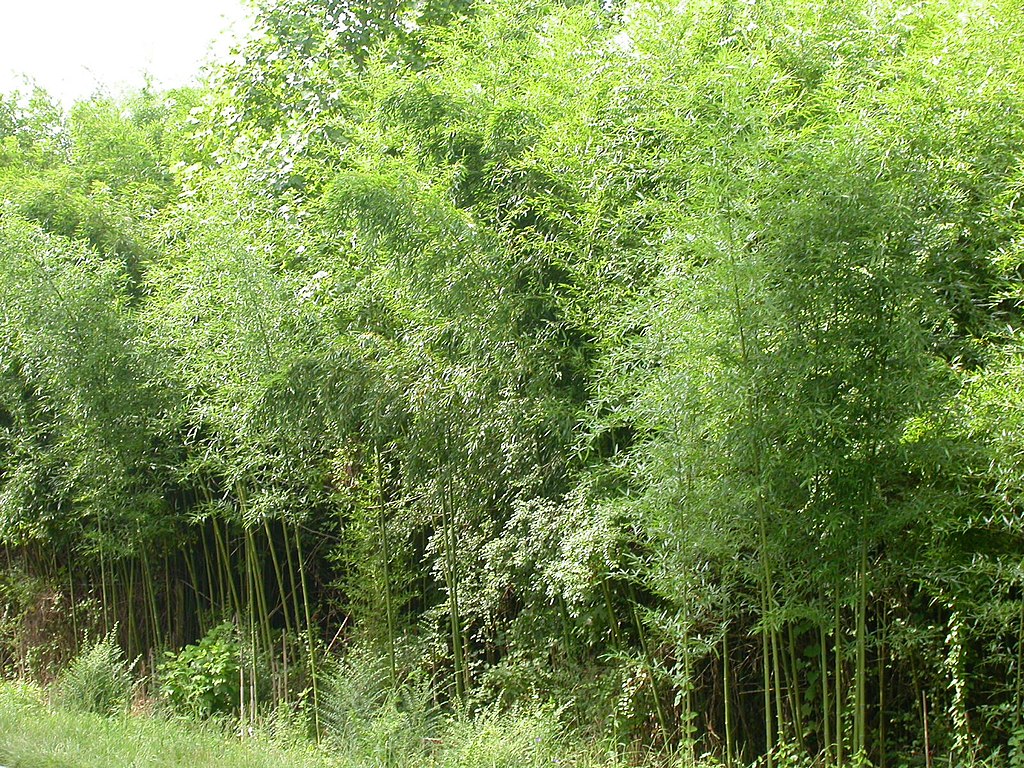Key Takeaways
- Golden bamboo, known for its rapid growth and spreading nature, requires proactive management strategies to control its expansion effectively.
- Implementing physical barriers, such as underground barriers made of durable materials, can restrict the spread of golden bamboo’s rhizomes.
- Regular monitoring and maintenance are crucial for identifying and promptly removing new shoots and rhizomes to prevent further expansion.
- Seeking professional advice and assistance from experts in invasive plant management can provide tailored solutions and valuable insights for effectively managing golden bamboo’s growth.
What is Golden Bamboo?
Golden bamboo, scientifically known as Phyllostachys aurea, is a species of bamboo that is highly valued for its ornamental qualities and versatility. However, its rapid growth and spreading nature can pose challenges for those seeking to control its expansion in their gardens or landscapes.
Golden bamboo has a vigorous rhizome system that allows it to spread quickly underground, sending up new shoots at a considerable distance from the original plant. These rhizomes can extend horizontally up to several meters each year, making containment essential. Without proper management, golden bamboo can quickly become invasive and dominate other plants within its vicinity.
Controlling and managing the growth of golden bamboo require employing various strategies such as using barriers and root control methods. Barriers made of metal or concrete can be installed vertically into the ground to prevent rhizome expansion. Additionally, root control methods like regular cutting or mowing can weaken and restrict the plant’s ability to spread.
Regular monitoring and maintenance are essential to ensure effective control over golden bamboo’s spreading tendencies. Vigilance in identifying new shoots and promptly removing them is crucial in preventing further expansion.
For those facing difficulties in controlling golden bamboo growth, seeking professional advice and assistance from experienced gardeners or landscapers may provide valuable insights into effective management techniques specific to individual circumstances.
In conclusion, understanding the rapid spreading nature of golden bamboo is vital for individuals seeking control over its growth. By implementing appropriate strategies such as barriers, root control methods, regular monitoring, and seeking professional assistance if needed, one can effectively manage this versatile yet potentially invasive plant species.
Understanding the Growth Habits of Golden Bamboo
The growth habits of golden bamboo are of great interest due to its ability to spread rapidly and potentially become invasive. Understanding the growth patterns of this species is essential for effective control strategies.
Golden bamboo exhibits an aggressive rhizomatous growth habit, with underground stems called rhizomes that allow for rapid expansion. These rhizomes can extend several feet in all directions, enabling the plant to colonize new areas quickly.
Environmental factors also play a crucial role in the spread of golden bamboo. It thrives in moist soil conditions, but can tolerate a wide range of environmental conditions such as sun or shade. Additionally, it has a high tolerance for various soil types and pH levels, allowing it to establish itself in diverse habitats.
Overall, knowledge about the growth patterns and environmental factors influencing golden bamboo’s spread is vital for managing and controlling its invasive potential effectively.
Controlling and Managing Golden Bamboo Growth
Controlling and managing the rapid expansion of golden bamboo necessitates careful implementation of effective growth containment strategies. Golden bamboo, known for its aggressive spreading habit, requires proactive measures to prevent it from becoming an invasive species.
To successfully manage the growth of golden bamboo, consider the following strategies:
- Regular maintenance: Implement a routine pruning schedule to control the spread of new shoots and rhizomes.
- Physical barriers: Install underground barriers made from durable materials like high-density polyethylene or metal to restrict the spread of rhizomes.
- Chemical control: Utilize herbicides specifically formulated for bamboo containment to selectively target and suppress new growth.
By employing these techniques, individuals can effectively manage and contain the growth of golden bamboo, preventing it from encroaching on desired areas and becoming a nuisance. It is crucial to remember that proper management practices are essential in controlling this invasive species effectively.
Using Barriers and Root Control Methods
Implementing barriers and root control methods are essential in effectively managing the growth of invasive golden bamboo. These methods help prevent the spread of bamboo rhizomes, which can quickly take over an area if left unchecked.

One effective method is to install physical barriers made of durable materials like concrete or metal. These barriers should be buried at least 2 feet deep to prevent rhizome penetration. Additionally, regular monitoring and maintenance are necessary to ensure that no rhizomes escape from the designated area.
Another potential solution is the use of chemical controls, such as herbicides specifically formulated for bamboo eradication. However, it is important to consider the environmental impact of these chemicals and use them sparingly and according to manufacturer instructions.
Overall, implementing barriers and root control methods provide practical solutions for managing the rapid spread of golden bamboo while minimizing its environmental impact.
Regular Monitoring and Maintenance
Regular monitoring and maintenance of invasive bamboo growth is crucial in order to effectively manage its spread and prevent further encroachment into surrounding areas. This involves implementing regular inspections and assessments to identify any signs of overgrowth or potential issues.
It is important to promptly address any new shoots or rhizome growth that may emerge outside the designated area, as they can quickly establish new colonies if left unattended. To prevent overgrowth, it is recommended to implement eco-friendly maintenance practices such as manual removal, cutting back shoots, or using organic herbicides.
Regularly trimming the bamboo can help control its height and density, reducing the likelihood of it spreading uncontrollably. By being vigilant in monitoring and maintaining golden bamboo growth, individuals can effectively manage its spread while minimizing negative impacts on the surrounding environment.
Seeking Professional Advice and Assistance
Seeking expert guidance and professional management techniques can provide essential support in effectively managing the spread of golden bamboo and preventing its encroachment into surrounding areas. Professionals in the field possess a deep understanding of invasive plant species and have access to specialized knowledge on controlling their growth.
They can conduct thorough assessments to determine the extent of the bamboo’s spread and recommend appropriate strategies for containment or eradication. These experts are equipped with advanced tools, equipment, and methods that are not readily available to the general public. Moreover, they stay updated with the latest research findings and best practices, ensuring that their advice is based on sound scientific evidence.
By seeking professional assistance, individuals can benefit from tailored solutions that address specific concerns related to golden bamboo’s rapid expansion while minimizing damage to the environment.

